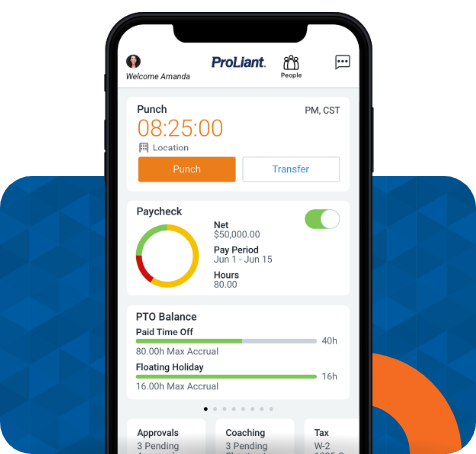Accurate and efficient payroll is vital for your business. However, when your payroll provider isn’t up to par, it can be a pain and even cause you to face compliance issues and expensive fines. If you’re considering switching payroll providers, we have answers to some of the most common questions businesses ask before making the change.

Why should a company switch payroll providers?
Many businesses get to a point due to growth or negative experience where it becomes apparent that it is time to switch payroll providers. The four most common reasons for switching payroll providers include the following:
1. Poor customer service
If a payroll provider takes a long time to respond to questions and concerns about payroll, or if it needs to be clarified who to contact about such issues, this is a big red flag that it is time to change payroll companies. Ideally, a dedicated account manager will be assigned to your payroll service from the beginning so that you know exactly who to call when you have a problem.
2. The payroll solution is too difficult to use
If you spend a lot of time navigating the tools or sending questions to your payroll company, it is a sign that the company needs to put more effort into ease-of-use solutions, such as built-in help functions or an intuitive user interface. Many payroll companies will offer setup assistance, training, and support to ensure you can easily use their tools and always have a smooth payroll.
3. Payroll solution or service does not meet business needs
Businesses often switch payroll providers because their current provider does not meet the needs of their business. Here are two things to consider when determining whether or not your payroll provider meets the needs of your business:
Essential Features: There are a vast number of features that can be included in any payroll solution, and it can be challenging to assess which features will best serve your needs. For example, you may need accessible reporting features, multiple payment options, PTO management, tax credit assistance, direct deposit, etc.
Integrations: Do you need your payroll system to integrate with time and attendance or performance management tools? Many payroll companies have solutions that integrate with payroll to make using these systems more straightforward. However, if you find that your HR and payroll teams have to duplicate tasks using multiple tools, your solution may not meet your business needs and could be costing you a lot.
4. Payroll solution and service cost too much
Whether you are paying per payroll or on a monthly payment structure, it is not uncommon for fees to start piling up, especially as your business grows and you hire more employees. Also, some payroll companies charge based on employees in the system, whether they are being paid or not, which can lead to overpaying without active management of your database.
Looking at the current payment structure for your payroll provider and what you need for your business is one way to assess if it is time to switch.
Here are the two most common cost structures used by payroll companies:
Per-payroll price structure: The payroll provider charges a fee every time you run payroll and another fee for each employee. This model is probably better for businesses that only need to run payroll once or twice monthly.
Monthly pay structure: The payroll provider charges a base monthly fee with unlimited payroll runs, and these pay structures often include a fee for each employee per month as well. This pay structure is best if you run multiple payrolls per month.
When is the best time to switch payroll companies?
When switching payroll companies, there’s not really a “best time” to make the change. However, with the right payroll company, you can migrate data and complete implementation anytime in the year without too much hassle. Regardless of when you switch, you can expect the entire process to take two to twelve weeks, depending on the complexity of the payroll migration.
Many people prefer to switch payroll providers at the end of the year to start with the new company at the beginning of the calendar year. However, this can often be a challenge as businesses deal with various other year-end processes. Therefore, if you choose to switch at the end of the year, it’s best to plan the transition so that you start working with your new payroll company at the start of your first payroll for the year.
If you switch payroll companies during the middle of the year, you will have to work with your previous company to input data into your new system, which isn’t always an easy transition. However, the best payroll companies can manage the transition during the middle of the year without issue.
What is the process for switching payroll providers?
Every process for switching payroll will look slightly different depending on the complexity. Here are is the basic process for switching payroll providers:
Step 1. Research and Reviews. Review sites like G2 Business Software Reviews are great for comparing companies and reading reviews for how they rank when it comes to data migration and customer service.
Step 2. Schedule a Demo. When you find one that looks like they will have everything you need, schedule a demo. Have them walk you through the process for transitioning data from your old company and what implementation will be like.
Step 3. Inform Your Current Provider. Once you find a company you want to switch to, let your current payroll provider know that you plan to make a switch. Get information on what canceling your service will entail: requirements for notification of cancellation, fees, etc.
Step 4. Work with Your New Provider to Get Started. Set up a date to begin the transition from your current payroll company to the new one. It may take a few weeks for data migration and then a while longer to implement your new system.
Step 5. Out with the Old, In with the New. Give notice to your old provider using the process for cancellation they require. Ensure your new provider has all of the information and data they need from your old payroll company before cutting ties.
Is it hard to switch payroll companies?
It doesn’t have to be hard to change to a new payroll company, but some companies may be better equipped to handle these types of transitions than others. Here are the two biggest problems you might face when dealing with changing payroll companies.
Payroll Migration
The biggest problem when switching payroll companies comes with data transfer during payroll migration. There are many companies well-equipped to handle data entry and migration to help ensure that this won’t be a problem. Double-check when choosing a new provider that they plan to manage all data entry to ensure a smooth process.
Poor Customer Service
Sometimes, companies with poor implementation processes can see errors such as duplications in data. Also, some payroll companies skimp on their customer service, making the change difficult and confusing for everyone involved. Look for companies with good service records to avoid this common issue.
Tip: Avoid these issues by checking review sites like G2 Business Software Reviews. You can use the search function to look for reviews about payroll migration and customer service from genuine customers.
How do I choose a new payroll provider?
When choosing a payroll provider that will meet your business’s unique needs, there is a lot to consider. Here are some common questions you may want to ask:
Does the company have dedicated contacts for managing your account?
In other words, will you have to go through a call center whenever you need help with your account? At Proliant, we provide dedicated account managers with a single point of contact – they know your business, you know their names, and you never talk to a robot.
Does the company help with the first couple of rounds of payroll?
Surprisingly, many companies don’t do this. Instead, they walk you through implementation and then leave you to it. At Proliant, we stick with you through the first two payrolls to ensure everything runs smoothly.
Can the company customize its solution based on your needs?
Every payroll company will also have a solution for human capital management, but do they have a robust suite of solutions that can be tailored to your business? Proliant has a solution for all business processes, and we’re constantly evolving to add more tools that will meet the needs of our clients.
Does the payroll company provide a smooth implementation process for transitioning from your old payroll company to the new one?
Implementation can be a nightmare. If it doesn’t go smoothly, it can cost your business valuable time and money. At Proliant, we pride ourselves on delivering a smooth and customizable implementation plan with a dedicated payroll implementation professional to ensure the best conversion experience possible.
Does the new payroll company have a good service record?
There are many sites to check for software reviews: Capterra, G2, Software Advice, GetApp. Not many companies can boast of offering the best customer service, but Proliant can. We are dedicated to accuracy, efficiency, and excellent service from implementation to the first payroll and beyond.
Does the payroll provider provide employee self-service tools?
Employee self-service (ESS) tools are vital for providing a great employee experience and making business processes more efficient. With ESS, your employees can manage their data, direct deposit information, and more without the need for back-and-forth emails with your HR team.
Switch to Proliant for Reliable Payroll and Excellent Service
Proliant gives you the online payroll services to pay your people accurately, on time, and without risk from the IRS. With contractor payments, unlimited payroll runs, built-in payroll audits, and more, Proliant ensures every payroll goes off without a hitch. We pride ourselves on providing excellent service when changing from your current payroll company. Our payroll experts will be there for your first payrolls to ensure everything runs smoothly.
Ready to make a switch? Schedule a demo with our payroll experts today.








No Comments Yet
Let us know what you think